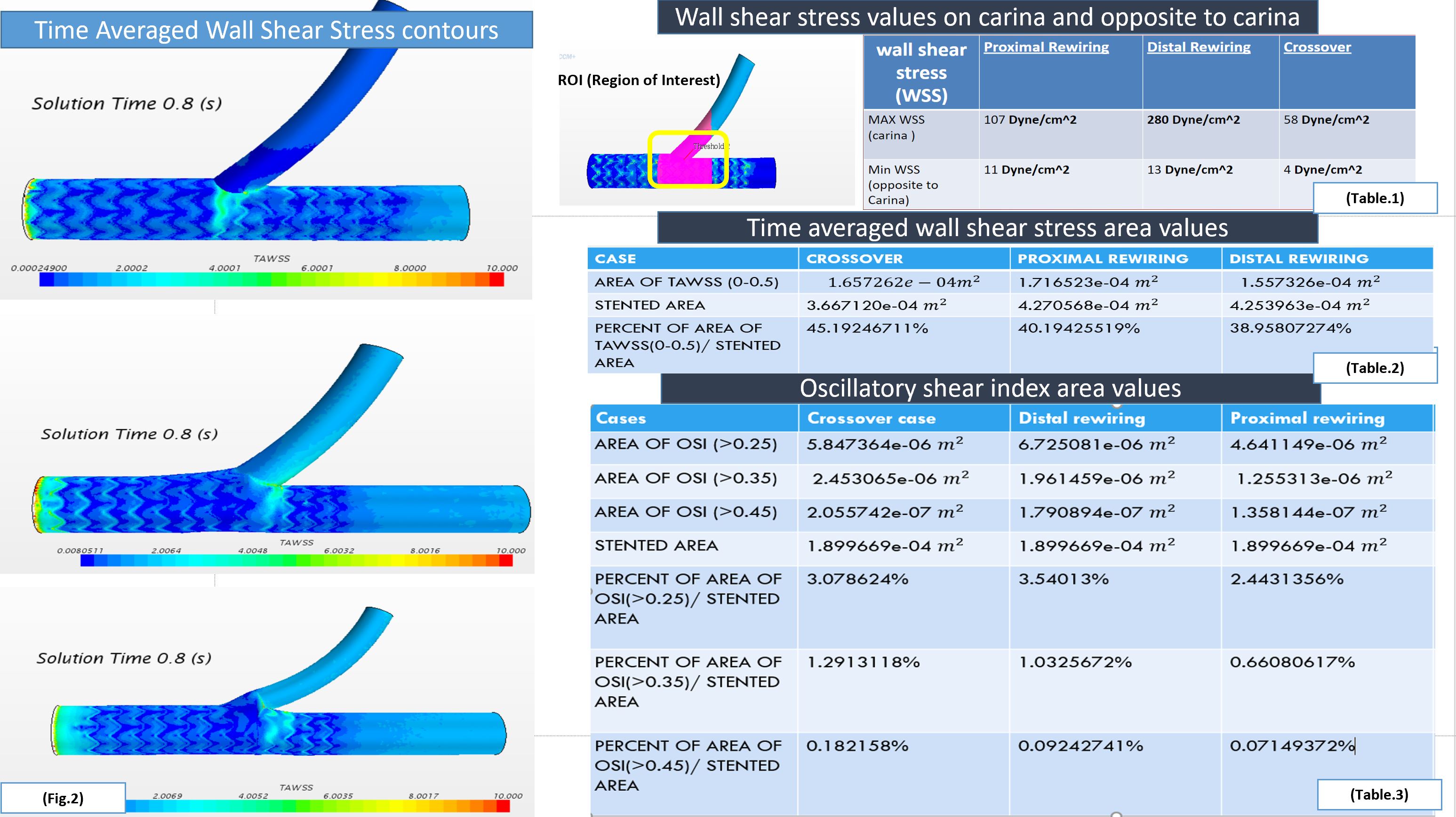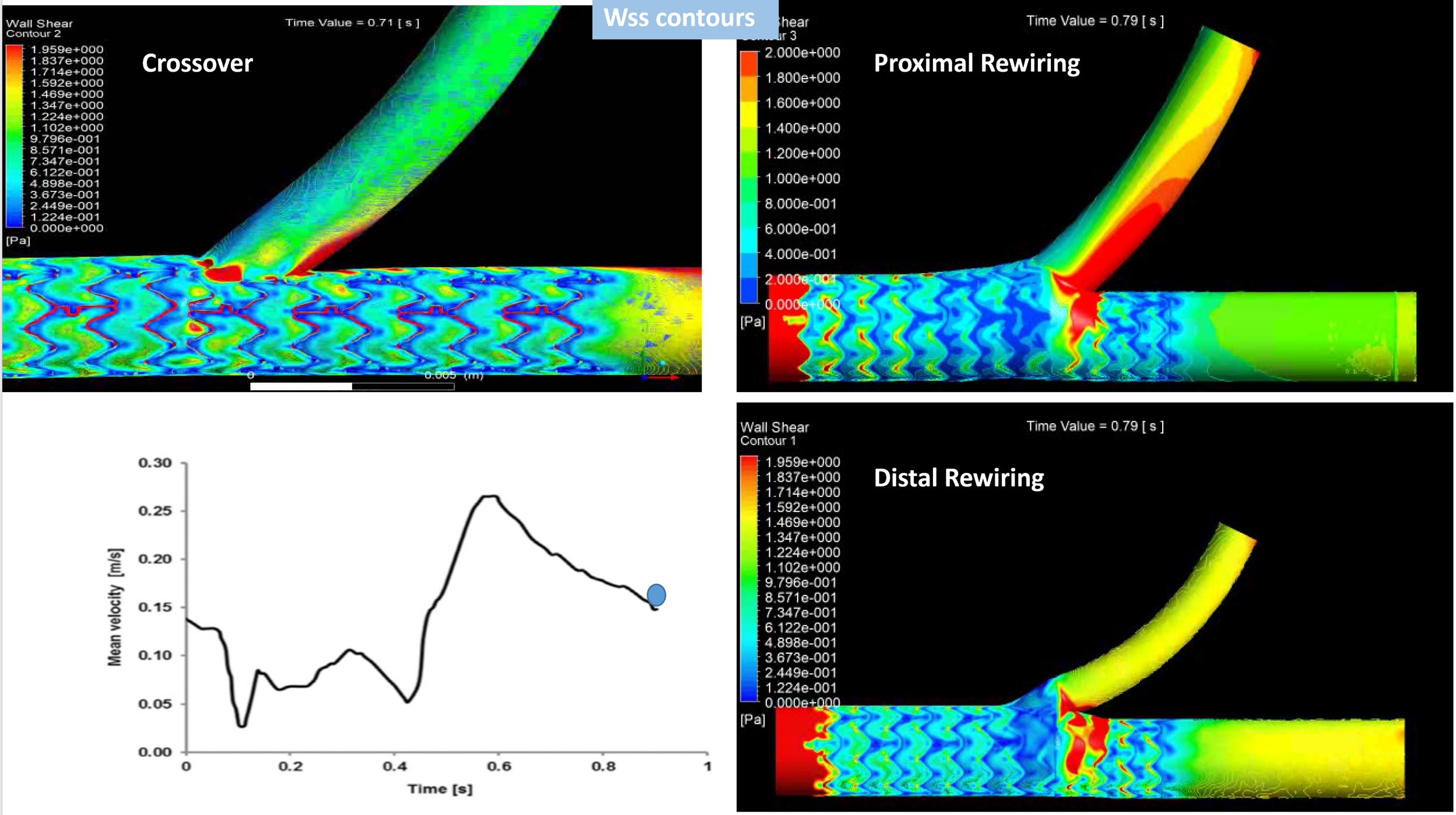Lots of interesting abstracts and cases were submitted for TCTAP 2023. Below are the accepted ones after a thorough review by our official reviewers. Don’t miss the opportunity to expand your knowledge and interact with authors as well as virtual participants by sharing your opinion in the comment section!
TCTAP A-033
Optimal Left Main Bifurcation Provisional Stenting Technique Assessed by Computational Fluid Dynamics Based on Low and Oscillatory Wall Shear Stress
By Mai El Zayat, Hassan Ali Warda, Ayman Bakry, Hazem Mamdouh Warda, Hagar Alm ElDin, Osama Shoeib
Presenter
Hassan Ali Warda
Authors
Mai El Zayat1, Hassan Ali Warda1, Ayman Bakry2, Hazem Mamdouh Warda1, Hagar Alm ElDin2, Osama Shoeib3
Affiliation
Alhyatt Cardiovascular center, Egypt1, Tanta University, Egypt2, Tanta University Hospital, Egypt3
View Study Report
TCTAP A-033
Bifurcation/Left Main Diseases and Intervention
Optimal Left Main Bifurcation Provisional Stenting Technique Assessed by Computational Fluid Dynamics Based on Low and Oscillatory Wall Shear Stress
Mai El Zayat1, Hassan Ali Warda1, Ayman Bakry2, Hazem Mamdouh Warda1, Hagar Alm ElDin2, Osama Shoeib3
Alhyatt Cardiovascular center, Egypt1, Tanta University, Egypt2, Tanta University Hospital, Egypt3
Background
Blood Flow Hemodynamics in Stented Arterial Segments Contributes Significantly to the Clinical Outcomes Following Stenting. It has been Shown in a Previous Authors’ Publication that in the Search for the Optimal Bifurcation Stenting Technique, The Main Vessel Stent Struts In front of the Side Branch Represents a Nidus for Restenosis and That Clearing the Stent Struts Provides Better Computational Fluid Dynamics (CFD) Outcomes Especially with Distal Rewiring Approach. The Study Focused Primarily on Low Wall Shear Stress (WSS) as an Indicator of Disturbed Flow. However, WSS-Based Analyses might be Incomplete, and It should be Complemented by a Description of the Bulk Flow .The Hemodynamic Parameters that should be Assessed at Stented Coronary Bifurcations through CFD Simulations are the Time-Averaged Wall Shear Stress (TAWSS), the Oscillatory Shear Index (OSI) and the Shear Rate.
Methods
Idealized Left Coronary Artery Bifurcation (Left Main (LM), Left Circumflex (LCX) and Left Anterior Descending (LAD)) Models and Computational Fluid Dynamic Analysis were used to Evaluate Hemodynamic Parameters which are known to Affect the Risk of Restenosis and Thrombosis at Stented Bifurcation .The Surface Integrals of (TAWSS) and (OSI) at Bifurcation Site were Quantified. Idealized Geometry was used (Fig. 1), for which Three Models were Built ; a) Stent Across Side Branch b) Stent Across Side Branch and Struts were Cleared as if Kissing Balloon Dilatation (KBD) was done in Proximal-Rewiring , and c) Stent Across Side Branch and Struts were Cleared after (KBD) was done in Distal-Rewiring. The Computational Version of Stent used was Created from a Xience Stent (Abbott, USA), After Being Photographed under Electron Microscope using Solidworks Mechanical Software and Inserted in the Ideal Geometries Simulating Typically the Different Techniques Held Experimentally on a Bifurcation Stenting Phantom Workbench.
Results
A Qualitative Comparison Between Crossover, Proximal and Distal Accesses is Made Where TAWSS Contour Maps Fig.(2) Show that Distal Access Leads to a Lower Area Characterized by TAWSS < 0.5 Pa., Especially in the Proximal Part of the Stent and in the Bifurcation Region and Area Opposite to Carina, where the Percentage Area Exposed to Low TAWSS in the Case of Distal Access is Lower than in the Crossover and Proximal Access. With Reference to Velocity Streamlines Maps, Depicted at Different Flow Rates Across the Cardiac Cycle, in the Case of the Proximal Access Fig.(1) & (vid.1), it Appears that Low Velocity Zones are Observed in the Vicinity of the Flow Divider Due to the Presence of the Stent Struts Inside the Vessel. These Struts Disturb the Access of the Side Branch, Modifying the Flow Pattern. A Lower Distortion of the Pattern can be Observed in the Distal Access Case. A Qualitative Evaluation of the Flow Disturbance can also be Observed in Fig.(1), which Presents the Shear Rate Field in the Middle Plane of the Geometry, Showing a Description of the Bulk Flow Behavior Indicating that Higher Shear Rate in the Proximal and Crossover Cases Resulting in a More Disturbed Flow Conditions. Now Even Though the Above Evidence of Higher WSS, Lower Area Characterized by TAWSS < 0.5 Pa. and Lower Shear Rate, in the Case of Distal Rewiring, Supports the Clinical Experience which Shows that Opening the Stent Struts through the Most Distal Strut Available Improves the Blood Flow Distribution Across the Coronary Bifurcation, the OSI Results of the Percentage Area of a Specified Region of Interest (ROI) of the Bifurcation Region that is Subjected to OSI Values Greater than Specific Predefined Thresholds, Come Slightly Lower in the Proximal Rewiring Case, as shown in Fig.(3). This may be Explained as Due to the Fact that Opened Struts are Shifted Towards the External Side of the Side Branch Wall, during (KBD) in Distal Rewiring, So that Blood Tends to Circulate Around Struts on the Side Wall and Flow Streamlines Change Orientation and Acquire Secondary Components in the Radial Direction as Shown in Cross-Sectional Streamlines Fig.(1).






Conclusion
Flow Simulation Studies Describing the Complex Situation/ Flow Pattern Near a Stented Coronary Bifurcations and Side Branches Regions Associated with Disturbed Blood Flow were Conducted to Compare Three Different Provisional Stenting Techniques, Namely Crossover, Proximal and Distal Rewiring Techniques. Hemodynamic Parameters that were Calculated at a Sub region of Bifurcation Site (ROI) which was Fixed at Stented Coronary Bifurcations Through CFD Simulations are the Time-Averaged wall Shear Stress (TAWSS), the Oscillatory Shear Index (OSI) and the Shear Rate.The Simulation Results Demonstrated that; It is Evident that Distal Rewiring Technique Provides the Optimal Computational Fluid Dynamics (CFD) Outcomes, In Terms of WSS, TAWSS, Shear Rate and the Minimum Percentage Area of TAWSS Values Lower than 0.5 Pa.






